For years, I’ve spotted unhealthy shoots on black and red pines and wondered about the cause.
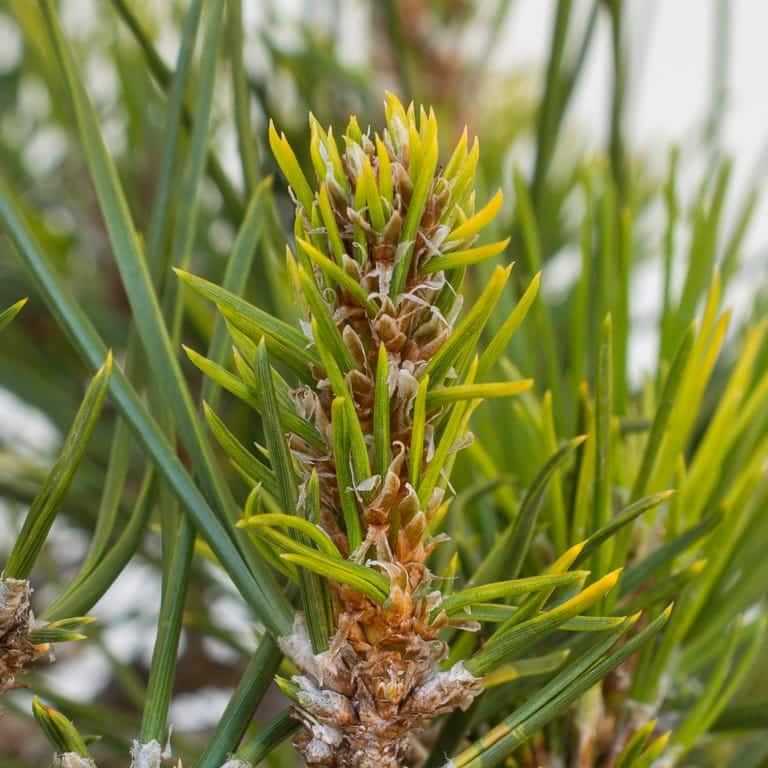
Unhealthy foliage on black pine
The main symptoms are discoloration – primarily yellow foliage – and deformed needles.
The problem affects young trees and old trees alike. On more refined trees, I see short, twisty, needles like in the photo above. On younger trees, the slender needles are longer but have a similar twist.
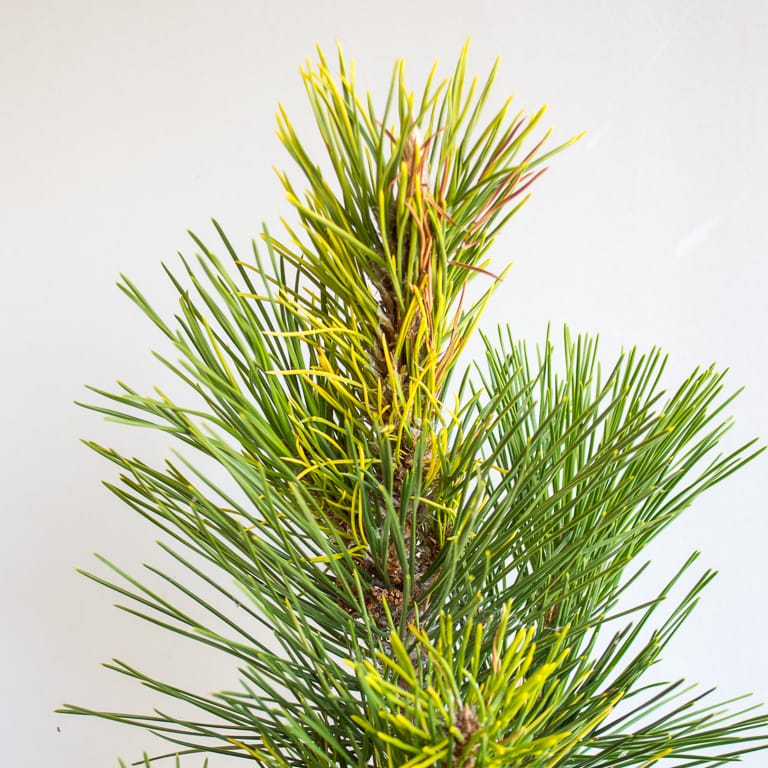
Affected foliage on a young pine
Most years the problem is limited to a few shoots on a few trees.
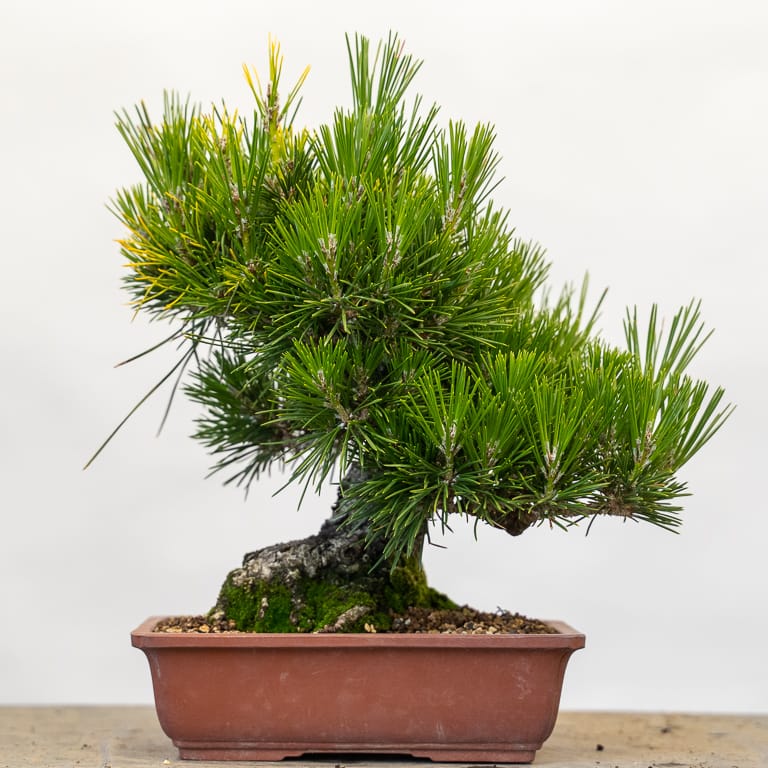
Minor symptoms
Occasionally the damage on given trees is more extensive. Only rarely does the problem affect a majority of the foliage.
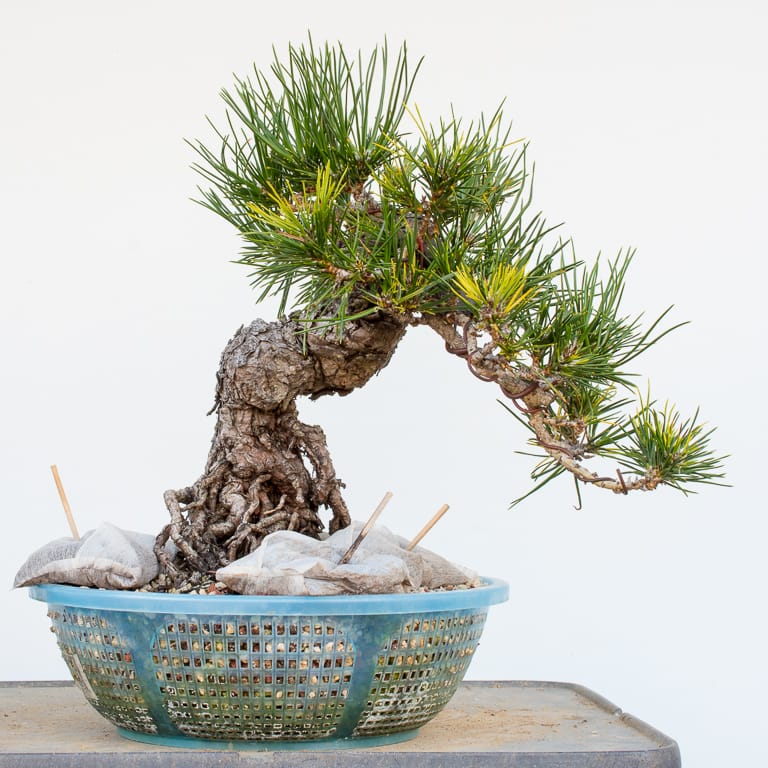
Moderate symptoms
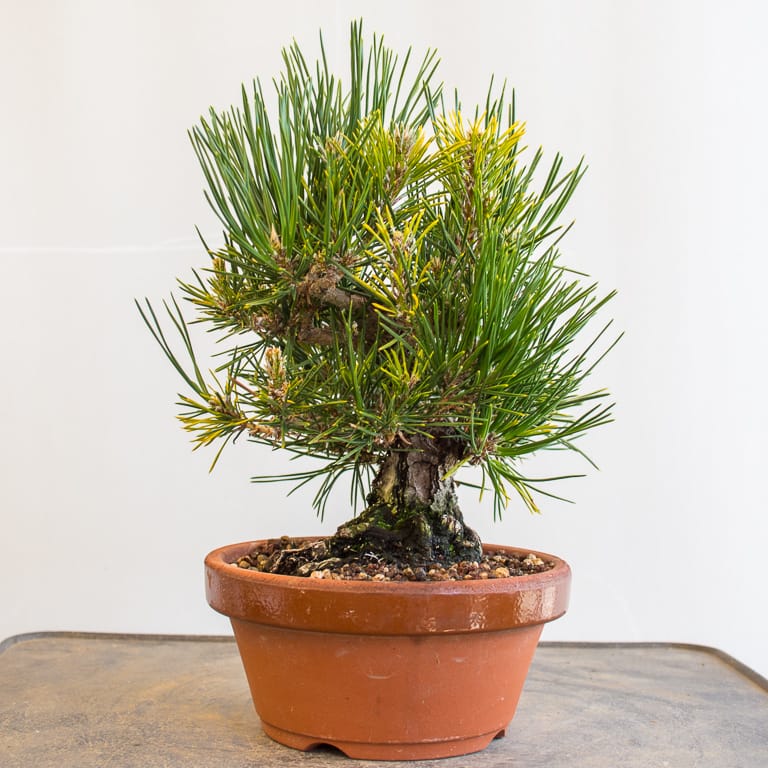
Extensive symptoms
In some cases, the trees recover after a year or two with no treatment. In other cases I cut away the affected foliage only to see a nearby branch succumb the following year.
I’ve long suspected there was a problem with the roots, but there is no way to tell for sure without sending samples to a lab for testing.
I was ready for an answer this year, so I sent affected branches and roots to Waypoint Analytical for analysis. About a month later I received the diagnosis: Pythium Root Rot.
The Pythium genus includes over one hundred species of oomycetes, fungus-like microorganisms that can cause a variety of plant and animal diseases. Pythium species are found in most soils, but are most likely to cause problems when excessive moisture is present.
This underscores the importance of using soil that doesn’t retain too much moisture. Volcanic particles like scoria and pumice are great for bonsai cultivation because they have irregular shapes that help maintain air in the soil. Sifting out fine soil particles with a sieve is another way to ensure roots don’t stay too wet.
Root rot is most likely to be a problem when bonsai are over-watered, when they haven’t been repotted in a long time, or when they are growing in soil that retains too much water.
If soil conditions improve for affected trees as a result of repotting or better watering habits, many trees can beat the fungus on their own. In more severe cases, treatment may be necessary. (See The University of California Integrated Pest Management website for Pythium management tips.)
Pythium isn’t the only root rot disease that can cause the symptoms I found in my pines, and I can’t be sure that it’s the culprit for all of the pines in my garden with symptomatic foliage. That said, getting the diagnosis has led me to change how I care for affected trees.
The biggest change is that I’m letting my pines dry out much more between waterings, particularly for weak or symptomatic trees. Even on hot days I avoid watering pines when the soil below the surface is moist.
I also plan to repot most of the affected trees this winter and will use soil mixes that retain less water (soil mixes with larger particles and a lower percentage of akadama).
In the meantime, I’m making sure all of the pines in my garden are getting enough sunshine and fertilizer to get them as healthy as possible ahead of winter.
Subscribe to Bonsai Tonight
New Posts Delivered Every Tuesday and Friday
Charlie Mosse says
This is very good info and reference photographs. Thanks!!
Unfortunately the pines look like a few of mine. Still learning to let them dry out more which is working. It is a difficult decision during those hot days when you see the soil surface, and a bit below, is very dry but, digging down and/or using a moisture meter shows it is moist. Any tips there or is it just being sure to check properly, consider the weather and then using common sense for one’s own trees and weather.
Jonas Dupuich says
You said it Charlie – the trick is figuring out an acceptable level of moisture based on your soil and your weather. The soil below the surface shouldn’t be bone dry – that’s too dry! – but it shouldn’t be wet either. If foliar fungus isn’t a problem, you can overhead water on hot days and only wet the soil when needed. When it gets over 100 in my garden, I’ll overhead water 5-6 times a day to keep the garden and the foliage cool.
Zack Clayton says
Jonas, have you ever been under a watering ban in your area? what do you do to maintain tree moisture in those cases? I know that a lot of California had watering bans in place a few years ago so what is your advice when that happens?
Jonas Dupuich says
Great question Zack. During the last drought, fees were applied to people who used more than their allotted share of water. As for strategies for dealing with drought, we can either increase our supply or decrease our demand. Saving rain water only gets us so far in California as we don’t get rain in summer. Wells may be an option for some, but not many people. Re-using water is another option, but I don’t know of good ways to deal with pathogens that might be present in the water.
As for reducing demand, that could entail moving trees to more sheltered locations and using shade cloth. Theoretically we could adjust our soil mixes but I don’t know that there would be a big gain from that approach. One of the main things to try would be to change watering habits so we’re not using the hose as much between trees and letting so much water run through the bottom of the pot. Dipping trees instead of hose watering could help a lot in this regard. I’d also consider reducing my collection to focus on the trees I care about most.
That’s what comes to mind off the bat – will be curious to hear if others have ideas. Thanks for the question!
Richard Dorfman says
Excellent article, Jonas. Thank you. I have several young black and red pines (9-10 yrs old) started from seedling currently in pond baskets. Whenever I think its time to water, I remind myself to wait another day or two. 😎. Seems to have worked; no yellowing needles to date. Live in Vermont; a bit trickier now that Fall has arrived – cool days, lots of rain showers. Even when it’s sunny, soil doesn’t fully dry out due to cooler temps.
Question: When you say you repot in winter, do you mean mid-winter, or when trees are about to bud out at end of winter (just before Spring)?
Jonas Dupuich says
Hi Richard! Good question – because winter is so mild where I live I can repot from December through February or March depending on the species. Just before the buds open in late January or early February is best where I live, but there’s a lot of flexibility as the roots start growing near the end of the year and some trees never go fully dormant.
I’ve found the same thing about watering in my garden lately. Fall can be tricky as plants dry out much slower now than in spring or summer.
Thanks for the note!
Gia Trinh says
Maybe too much fertilizer ?|
Jonas Dupuich says
Hi Gia! Using too much fertilizer can damage the roots and weaken the tree. This can make it easier for the tree to get the disease. The same thing can happen if the tree dries out too much – any root damage can lead to weakness followed by root rot.
Martin says
I have one Pinus nigra, which came to my garden with huge amount of field soil. I potted the tree last year in spring in a way, that I didn´t touch any of soil underneeth the trunk and put the tree into bigger pot. Outside of field soil I used Pumice with lava and akadama soil mix, but all this year´s growth look like your ill needles. May it be a disproportion in soil mixes? I assume, that field soil in the core remains too wet, while draining soil on the edges of pot is dry. Do you have any clue how to solve this problem until I can repot the tree and change the sheen of o tree?
Jonas Dupuich says
Hi Martin! Sounds frustrating. Lots of things can make for yellow foliage, but keeping the tree wet is a likely culprit (feel free to upload a photo to the forum and I’ll be happy to take a look).
If the tree is in really bad shape, I’d repot again this spring and I’d watch the watering really carefully between now and early spring. If your winter is mild (no freezes) you can repot a bit earlier.
When transitioning trees into bonsai soil, it’s helpful to remove as much field or nursery soil as possible, and to use bonsai soil that drains well. The approach you described can work well when roots protrude into the new soil during repotting as these are the roots you care most about. (I usually take the opposite approach as I want to get good soil near the trunk as soon as possible but both approaches can work well.)
After repotting, the trick is figuring out whether to water the right amount for the old soil or the new soil. It’s most important to support the roots in the new soil which can be a bit much for the roots in the old soil. The best way around this is to check both the new and old soil about .5-1.5″ below the surface and only water when the tree is starting to dry out down there. After checking the new and old soils regularly, you can usually get a feel for the tree’s water needs.
Austrian black pines may not use as much water as black pines so I found I watered them far less than other pines in my garden.
I hope this helps – feel free to follow up in the forum if you can think of anything else!